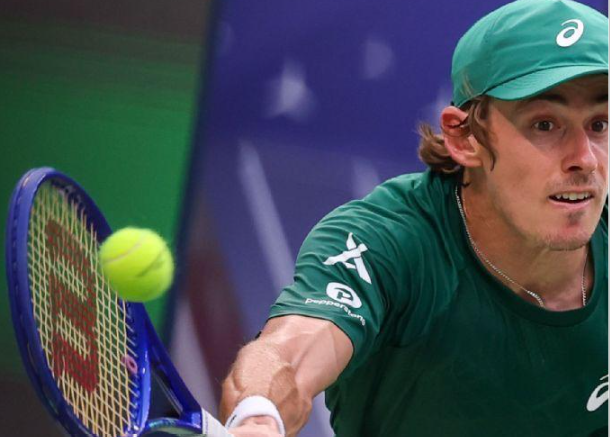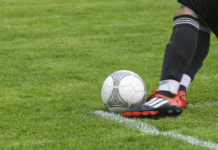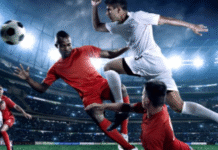
Non-contact sports are gaining popularity in Nigeria as more people prefer safe alternatives. Non-contact sports tend to be more inclusive when it comes to staying active.
People of different ages and backgrounds are drawn to the best bookmakers such as 1win and these sports as they involve fitness yet come with a lower chance of injury. In this article, let’s look at 10 popular non-contact sports in Nigeria and provide ideas on what they are, what benefits they provide and ways to participate in them.
What Are Non-Contact Sports?
To understand Nigeria’s widening sports culture, it is important to understand what non-contact sports are, and how they differ from contact sports.
Definition of Non-Contact Sport
Non-contact sports are activities in which players do not come in direct contact with each other. Rather, they focus on skill, accuracy, endurance and coordination. Other examples are tennis, golf, swimming and archery. These sports are constructed to minimize direct bodily engagement to lower the chance of injury. This makes them ideal for beginners and more advanced players.
Participation in recreational, competitive, and professional activities in non-contact sports has become common in Nigeria, especially owing to schools, clubs, and community programs.
Difference Between Contact and Non-Contact Sports
The difference between contact and non-contact sports is the distance between players and the level of physical interaction. For instance, contact sports involve tackling and hitting, as is the case in football and basketball. Non-contact sports, however, prefer distance interaction that focuses on coordination and interactive experiences between participants rather than collisions. As such, the players only interact through the ball and sports equipment, with each side of the ball maintaining its own position and movement pattern.
Tennis is a sporty example where players interact through a net, and in golf, players use the least possible number of strokes to complete their rounds individually. Similarly, in bowling, participants roll the ball toward pins positioned at the end of a long lane, focusing on precision rather than contact. This level of distance interaction is primarily why non-contact sports are less risky, more strategic, and can accommodate more people of varying physical and fitness levels. Many also see these sports as part of performing arts that highlight skill, rhythm, and focus, while some outdoor versions, like surfing, are suitable for water surfing enthusiasts seeking non-contact athletic challenges.
Popular 10 Examples of Non Contact Sports in Nigeria
Vast recreational and competitive non-contact activities have integrated themselves into different aspects of the vibrant culture and lifestyle in Nigeria. Here are some of the more recognized and rapidly evolving non-contact sports in the country that allow people to showcase their skills in both leisurely or competitive formats.
Tennis
Tennis is among the most popular racket and non-contact sports in Nigeria. It can be played solo or between two players, with each opponent facing the other from across a net. The ball can hit the ball and must have bounced the ground once inside the playing zone before the player returns it. The game relies heavily on agility, endurance, and hand-eye coordination. Nigeria has had its fair share of tennis talents, with the likes of Nduka Odizor and Sylvester Emmanuel representing the country in international competitions.
There are more tennis courts in urban areas, particularly in Lagos and Abuja. Here, clubs and tennis academies focus on training the youth. The sport is ideal for any age since the chances of touch or contact are minimal, and each player at the side of the court remains separated from their opponent.
Volleyball
Volleyball is also one of the most popular ball sports and non-contact sports in Nigeria. Here the game is played between two teams with a net in the middle. The objective is to ground the ball on the other team’s court, and each teammate must cooperate within their zone to earn points. The sport is team-based, and each side usually consists of six players.
In Nigeria, it is common to have volleyball tournaments in universities and secondary schools. The sport can be played in a variety of settings — beach, indoor, or as a family gathering. The sport’s interactive experiences and performing arts-like coordination make it appealing for all genders and ages. Its evolution into both casual and competitive formats ensures it remains among the examples of such sports that emphasize teamwork over physical confrontation.
Bowling
Bowling is a recreational, non-contact sport that has emerged as a popular activity among urban entertainment centers in Nigeria. It consists of throwing a ball towards a target, pins at the end of a lane — aiming to knock down as many as possible. This is why it’s called “pin bowling”. It takes precision, balance, and consistency.
Although it is still emerging compared to other sports, bowling is a great option for people looking for a fun, relaxed form of exercise that is not too physically demanding. It is a popular type of this game played both outdoor and indoor for recreation. Bowling alleys are now featured in several entertainment options in Lagos and Abuja, increasing access for the population. Expert players try gathering 300 points — a perfect score achieved when twelve throws were perfect.
Golf
Golf is a popular club and ball sport among the elite and growing middle class in Nigeria. It is an individual, non-contact sport that is played outdoors on a series of holes on large open-field courses. Players must use the least possible amount of club hits to drive balls into each hole. Each golf course is different and offers players unique landscaping challenges to overcome while hitting balls accurately.
The sport is supported by numerous golf clubs within the country, like the one in Ikoyi, Lagos, and the IBB Golf Course in Abuja. It helps build focus, patience, and control. Golf allows players to rely on technique over strength, making it ideal for those who enjoy a leisurely or competitive challenge.
Other Examples of Non-Contact Sports
Beyond the provided examples, Nigeria is also developing interest in other non-contact sports such as:
- Badminton: Similar to tennis, this sport in which players rally a shuttlecock that must land inside the playing zone before returning it.
- Track and Field: Includes javelin throws, long jumps, and running competitions — examples of such sports requiring athleticism and coordination.
- Table Tennis: A fast-paced indoor sport where the ball can hit the ball either side of the table, emphasizing precision and reflex.
- Cycling: A popular surface water sport equivalent on land, promoting endurance and balance without touch between competitors.
- Swimming: A popular water sport in the world that enhances coordination, strength, and flexibility. It’s often seen as a sport in which players compete individually in lanes without physical interaction.
- Surfing: A lightweight board to ride on the forward-facing face of a moving water wave, often practiced by surfers. This water surfing can be found near ocean shores, making Nigeria’s coastlines ideal for this growing activity.
- Gymnastics: A discipline combining balance, rhythm, and strength, helping players in both leisurely and competitive environments showcase their skills.
- Dart: A simple precision-based game where players throw a ball towards a target (dartboard) to score maximum points.
With national competitions and local clubs, these activities remain vital examples of such sports contributing to Nigeria’s growing athletic diversity.
History and Development of Non-Contact Sports in Nigeria
Non-contact sports in Nigeria have their evolution rooted in the colonial days when the British introduced tennis, golf, and athletics. Over time, development through government and private organization investments in infrastructure and national tournaments has enhanced participation.
Sports like table tennis and volleyball were promoted in schools with inter-school competitions. In major cities, modern facilities have also made sports like golf and bowling more accessible. With the possible means of digital promotion and global exposure, interactive experiences now inspire many young Nigerians to focus on these non-contact sports.
Benefits of Non-Contact Sports
Non-contact sports are not just about competition; they also have many rewards on a physical, psychological, and social level. Below are a few of the most important benefits that oppose those of high-contact activities.
Physical Fitness and Overall Health
Participation in non-contact sports improves the heart, strengthens muscles, and increases flexibility. Tennis, swimming, and cycling — which are examples of such sports — provide a full-body workout, improve endurance, and help regulate blood pressure and metabolism.
Regular engagement reduces risks of chronic illnesses and encourages athleticism without excessive strain on the knee or belly or knees areas. Since participants rely on coordination instead of contact, they maintain health and agility over longer periods.
Injury Prevention and Safety
Safety is a major reason people favor non-contact sports. The lack of touch or physical contact allows players to focus purely on their performance. This safety level suits children, the elderly, or those recovering from injuries or surgery such as stroke.
Proper warm-up, stretching, and correct use of gear reduce risk further. Sports like golf and tennis commonly oppose collision-based gameplay, maintaining safety while encouraging discipline and focus.
Accessibility for All Ages and Abilities
Non-contact sports provide inclusivity for people of all ages and abilities. Whether it’s a teenager learning tennis or a senior enjoying golf, everyone can participate. The absence of offense or body impact makes these sports approachable and safe.
Adaptive versions of team-based and outdoor sports let individuals with disabilities take part using modified equipment. This encourages equal opportunity and interactive experiences that foster mental health and social connection.
How to Get Involved in Non-Contact Sports in Nigeria
Getting involved in non-contact sports in Nigeria is now easier due to wider awareness and better facilities. Local clubs and schools often organize training programs for players in both leisurely and competitive settings.
Tennis and golf clubs, for example, offer coaching sessions and open tournaments. People can also join team-based community sports, from volleyball to cycling. Beginners should start with affordable equipment and progress gradually, focusing on improving skill and endurance.
Engaging regularly enhances fitness, strengthens social networks, and promotes performing arts-like coordination in movement.
FAQs
What are some popular non-contact sports in Nigeria?
Tennis, volleyball, and golf are non-contact sports in Nigeria along with badminton, table tennis, and athletics. These sports are enjoyed across the country in schools, clubs, and recreational centers.
How do non-contact sports benefit physical health?
Non-contact sports aid in cardiovascular health, muscle strength, and flexibility. Additional practice improves stress levels, sleep, and weight.
Are non-contact sports suitable for all age groups?
Non-contact sports are safe and can be modified for each age range. Children, adults, and seniors all take part; each having the intensity modified to their capability.
How can beginners start participating in non-contact sports?
Joining a local sports club or community centers is the first step. Many provide beginner lessons and even equipment for rent. The starting step is important, as is learning the right form and building stamina.
What equipment is needed for common non-contact sports like tennis and golf?
For tennis, the essential gear is a racquet, some tennis balls, and appropriate sports attire. In golf, you will need a set of clubs, a few golf balls, and some proper golf shoes. Each of these sports will need some kind of access to their respective facilities. In tennis, you will need a tennis court and for golf, a golf course.





